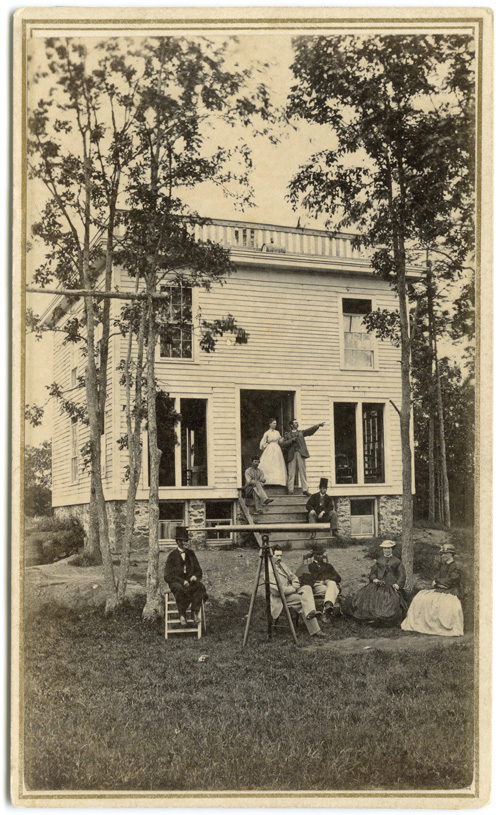Mountain House Photograph Collection

A popular tourist destination during the post-Civil War years, the Mountain House hotel was built on the summit of Sugar Loaf Mountain, in South Deerfield, Mass., by Granville Wardwell in 1864 on property owned by his father-in-law Dwight Jewett. Positioned near the southern end of the mountain, the hotel provided tourists with a stunning panoramic vista of the Connecticut River Valley.
This small collection consists of three scenic cartes de visite from a larger series featuring views from the Mountain House. The images include No. 6, a view of five persons perched on the southeast promontory of Sugar Loaf with a view to the northeast across the Connecticut River to Mt. Toby; No. 10, Mountain House with a group of nine men and women posed on the lawn with telescope and tripod; No. 18, view of barns at the southern base of Sugar Loaf Mountain.








